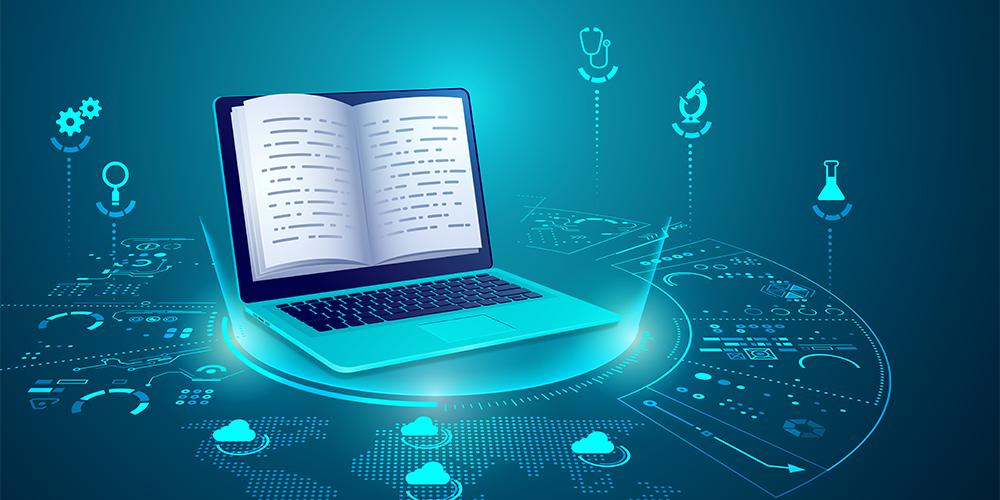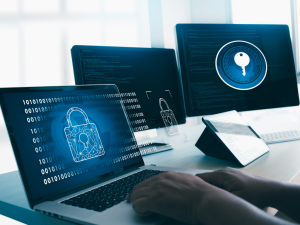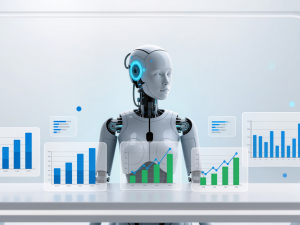Over the last ten years, education hasn’t just “changed”, it has been rebuilt. What once lived inside a physical classroom has expanded into a global, blended, always-on learning ecosystem powered by technology, connectivity and a complete shift in how people want to learn. A decade ago, learning was tied to timetables, textbooks and teaching styles shaped almost entirely by the instructor. Today, students can learn on a laptop at midnight, in a virtual lab that imitates a real server room, or alongside an AI tutor that explains a concept ten different ways until it finally clicks.
This transformation didn’t happen overnight. It came from a mix of global disruption, fast-evolving technology, growing awareness of personalized learning, and a deeper understanding that education must prepare people for the real world not just for exams. The turning point was the pandemic, which forced schools, colleges and training providers to rethink everything from delivery to assessment. But the shift didn’t fade once classrooms reopened. Instead, it accelerated a long-overdue reinvention.
Learners started expecting flexibility. Educators wanted better tools. Institutions needed scalable systems. Employers demanded graduates who could problem-solve instead of memorising. And technology filled the gaps from AI tutors and adaptive dashboards to cloud-backed virtual labs and global access to high-quality courses.
Because of this wave of innovation, the last decade has seen five major advancements that continue to shape how the world learns, teaches and upskills. These changes have improved accessibility, enhanced personalisation, prioritised real-world experience and widened the focus to include both technical and emotional growth. Whether you’re a student, a working professional or an educator, these shifts have touched every corner of modern learning.
Platforms like Ascend Education have played a role in this transformation by offering hands-on virtual labs, cloud-based learning, adaptive IT training paths and certification-aligned content that mirrors the needs of today’s workforce. Because education isn’t just about passing one exam it’s about preparing people for an industry that evolves every few months.
In the sections ahead, we’ll take a deep look at five defining upgrades in education over the last decade, why they matter, and how they continue to influence the future of learning. From the rise of blended online systems to the evolution of AI-driven study paths, from the growth of virtual labs to the emphasis on mental well-being, this is a decade of reinvention and it’s still growing.
How Did Online and Blended Learning Become the New Normal?
Online and blended learning became the new normal because students needed a system that moved with them, not against them. Traditional classrooms locked learning into a fixed time, fixed place and fixed pace. The last decade broke that pattern completely. Once students experienced the freedom to attend classes from anywhere, revisit lessons anytime and learn at a pace that actually made sense to them, there was no going back.
Today’s learning environment works like a seamless mix of both worlds. The physical classroom handles discussions, teamwork and hands-on activities. The online space handles video lessons, digital notes, quizzes, forums and everything students want to revise in their own time. Together, they form a flexible system where learners aren’t left behind, rushed ahead or forced into a one-size-fits-all schedule.
This shift happened because online tools became strong enough to support real learning, not just emergency teaching. Virtual classrooms let teachers demonstrate concepts instantly. Digital whiteboards allow students to work through problems in real time. Cloud-based submissions, quizzes and notes mean no lost papers and no confusion. And for subjects that need hands-on experience, especially IT, virtual labs now recreate everything from networks to servers to cybersecurity incidents inside a safe, controlled environment.
The biggest win is accessibility. A student in a remote town now gets the same chance as someone in a major city. A working professional can upskill without quitting their job. A learner struggling with a chapter can replay it ten times without feeling judged. Blended learning gives every student the freedom to learn in a way that fits their life, their speed and their goals.
This model also gives students something they rarely had before: control. They can check their progress anytime, decide which lessons need revision, and choose formats that work for their learning style videos, practice labs, text summaries or discussions. That ownership naturally leads to better confidence and stronger results.
In the IT and tech space, Ascend Education reflects exactly how blended learning should function. Students get on-demand video lessons, structured certification pathways and virtual labs that let them practice skills for CompTIA, Microsoft, AWS and more. Learning becomes smoother because students aren’t guessing what they’re doing. They’re configuring networks, solving security incidents, experimenting with cloud systems and learning the kind of things textbooks can never fully explain.
Online and blended learning didn’t rise because it sounded innovative. It rose because it solved the pain points of real students, real teachers and real workplaces. And as new tools like AI, cloud platforms, and data analytics keep getting sharper, this model will only get stronger, becoming the default for how future generations learn and grow.
Why Did Personalized and Adaptive Learning Take Centre Stage?
Personalized and adaptive learning took center stage because students finally stopped being treated like identical learners. Every classroom has fast learners, slow learners, distracted learners, curious learners and those who won’t speak up even if they’re completely lost. Traditional teaching pushed everyone through the same content at the same speed, and the cracks showed. Technology simply stepped in to fix a problem that had existed for decades: the gap between how students learn and how they are taught.
Adaptive learning systems study how a student answers questions, how long they take to solve something, where they hesitate, and which topics they revisit. Then they adjust the entire learning path automatically. If a student understands a concept quickly, the system moves forward. If they struggle, the system adds extra explanations, easier examples, or step-by-step practice. It’s like having a tutor who notices every small stumble and adjusts instantly without the student needing to ask.
The reason this works so well is simple: students don’t fail because they’re incapable; they fail because they lose the pace. Once they fall behind, confidence drops, anxiety rises, and the subject becomes “too hard.” Adaptive learning breaks that cycle by keeping the pace personal instead of uniform. The experience becomes less about “staying afloat” and more about actually absorbing what’s being taught.
Immediate feedback is another reason this approach took over. Instead of waiting days for a teacher to grade an assignment, students now see where they went wrong in seconds. That real-time correction helps them understand a concept while it’s still fresh in their mind. It turns mistakes into learning events instead of discouragement.
This shift also supports students who learn differently: visual learners who want diagrams, auditory learners who prefer explanations, and hands-on learners who need to practice. Instead of forcing everyone through the same format, personalized platforms offer multiple ways to understand the same idea. Students get choices that match how their brains work.
For teachers, adaptive learning is not a replacement; it’s a second pair of eyes. Dashboards highlight which parts of the lesson are confusing, which students are slipping, and who’s ready for more advanced material. Instead of guessing, educators can now focus their attention where it actually matters. This improves classroom energy too, because students come in with more clarity and less fear of “not getting it.”
In fields like IT, personalized learning isn’t just helpful, it’s necessary. Every learner enters with different strengths. One might understand networking easily but struggle with command-line tools. Another might master cloud concepts quickly but need extra time on security fundamentals. Pushing them through identical lessons creates weak foundations. Adaptive learning prevents these gaps from turning into real-world skill issues.
This is where Ascend Education aligns naturally with modern learning expectations. Their training pathways adjust to a learner’s pace, skill level and performance. Students take assessments that shape the next lessons they see. Video content matches certification objectives while practice labs deepen understanding. A learner who struggles with subnetting can practice it repeatedly in virtual scenarios until it becomes second nature. Someone preparing for a Microsoft or CompTIA certification gets a workflow that moves in sync with their strengths not someone else’s.
The appeal of personalized learning is not that it uses advanced technology. The appeal is that it finally feels fair. It doesn’t punish slow learners, it doesn’t hold back fast learners, and it doesn’t create invisible pressure on those who need more time but feel too shy to ask for help. It makes learning feel honest, not a race, not a competition, just progress at the right pace.
Most importantly, adaptive learning creates independent learners. When students know their platform will guide them, correct them and support them without judgment, their confidence grows. They take risks, explore harder topics and build the courage needed for technical fields that keep evolving.
Personalized learning became central because it answered the biggest frustration students have always had: “Teach me in the way I learn, not just in the way you teach.” And now that technology can support this, there’s no turning back.
Why Have Skills-Based and Experiential Learning Become Essential Today?
Skills-based and experiential learning became essential because students today need far more than the ability to memorize information they need the ability to use it. Modern workplaces don’t reward students for recalling definitions; they reward those who can analyze real problems, experiment with different solutions and adapt quickly when things change. That shift pushed education to move away from theory-heavy instruction and toward hands-on, problem-oriented learning.
Over the last decade, industries across every sector from IT to healthcare to engineering started demanding graduates who can contribute from day one. That meant education had to evolve. Instead of only reading about concepts, students now work through real scenarios, design solutions, troubleshoot failures and reflect on what went wrong. This practical approach helps them understand subjects at a deeper level because they see how their decisions influence outcomes in real time.
Experiential learning also grew because students learn better when they’re active participants. When they build projects instead of taking notes, or when they solve a challenge instead of copying an answer, the knowledge sticks. It turns curiosity into action. It makes learning feel meaningful rather than mechanical. And for digital-native learners who grew up exploring the world through interactive apps and games, hands-on learning feels natural and intuitive.
Another major reason this approach took over is that it closes the long-standing gap between education and employment. Employers kept saying, “Students know the theory but can’t apply it.” Experiential learning solves that by immersing students in real tasks, coding assignments, lab simulations, design prototypes, case studies and collaborative projects. These experiences build confidence, resilience and decision-making skills that textbooks alone can’t teach.
Skills-based learning also helps students discover their strengths. When they experiment, collaborate, or take on project roles, they often realize which areas excite them and which don’t. This clarity helps them make smarter academic and career choices early on, instead of figuring things out only after graduating.
This shift wasn’t limited to technical subjects. Even fields like management, psychology, and communication leaned into experiential approaches because problem-solving, creativity and leadership don’t develop through lectures. They grow through practice, reflection and feedback.
The rise of accessible digital tools played a huge part, too. Virtual labs, learning simulations, sandbox environments, coding practice platforms and automated feedback systems made hands-on learning possible even outside physical classrooms. Students could practise anytime, anywhere, without needing expensive equipment or lab space.
And as industries continue to evolve rapidly, skills-based learning teaches students how to learn continuously, not just study for exams. Lifelong learning became a survival skill, and experiential methods help students build the mindset needed to adapt again and again throughout their careers.
Skills-based and experiential learning became essential because they prepare students not just to pass tests, but to thrive in a world where real problems rarely come with answer keys and where the ability to think, create, and experiment matters far more than memorizing facts.
Why Has Social-Emotional Learning Become a Core Part of Modern Education?
Social-emotional learning (SEL) became a core part of modern education because academic success on its own is no longer enough for students to thrive. As classrooms became more digital, fast-paced and sometimes isolating, schools realized that learners also need emotional stability, self-awareness and interpersonal skills to navigate both their studies and their lives. That recognition pushed SEL from a secondary concept to a central pillar of how education is designed.
Students today deal with more pressure than ever, competitive exams, constant online comparison, information overload and the expectation to always stay “switched on.” SEL helps them manage that pressure. It teaches them how to identify their emotions, communicate clearly, ask for help, cope with stress and build resilience. Instead of letting challenges overwhelm them, students learn to face difficulties with a calm, balanced mindset.
Another reason SEL grew so quickly is its impact on behaviour and classroom culture. When students understand their emotions and the emotions of others, peer conflicts reduce, collaboration improves, and classrooms become more positive and inclusive. Teachers spend less time managing behaviour and more time actually teaching. Schools that adopted SEL early consistently saw improvements in attendance, participation and overall student wellbeing.
SEL also supports academic performance, something parents and educators couldn’t ignore. Research consistently shows that students with strong emotional regulation, empathy and relationship skills perform better academically because they’re more focused, more confident and more willing to participate. They’re not studying in survival mode; they’re learning with clarity and purpose.
The pandemic accelerated SEL adoption even more. When millions of students shifted to remote learning, teachers saw firsthand how loneliness, anxiety and uncertainty affected their ability to learn. This made it clear that emotional well-being isn’t optional; it’s foundational. Schools and colleges responded by integrating SEL strategies into lessons, activities, group discussions and digital platforms.
Digital learning environments also highlighted the need for students to build healthy online habits. SEL helps them navigate online interactions, manage distractions, handle digital conflict and maintain a sense of empathy even behind a screen. As education continues blending offline and online worlds, these skills are becoming essential.
SEL isn’t limited to younger students anymore. Universities and training institutes now recognize that emotional intelligence plays a major role in leadership, teamwork and long-term career growth. Professionals who communicate well, adapt quickly and stay steady under pressure stand out no matter the industry.
What makes SEL so powerful is that it supports the whole learner. It builds confidence, encourages kindness, strengthens relationships and helps students become grounded individuals who can handle both success and setbacks. In a decade where technology reshaped everything, SEL became the reminder that education is, at its core, a human journey and students learn best when both their mind and emotions are supported.
How Has Education Shifted From What It Was 10 Years Ago?
Education shifted so dramatically because the old model simply couldn’t keep up with the way students learn, work and communicate today. The last decade pushed classrooms to break out of rigid routines and evolve into ecosystems that are flexible, interactive and shaped around real skills rather than memorisation. The shift didn’t happen overnight; it emerged from thousands of small changes that slowly rewired how students engage with learning.
The clearest transformation is the move from teacher-centered instruction to learner-centered experiences. Students no longer sit waiting for information to be delivered; they explore, question, collaborate and build knowledge through real involvement. Learning becomes something that grows with the student, not something they passively receive.
Technology also blurred the borders of the classroom. Instead of being tied to physical spaces, students now learn across devices, platforms and environments. A lesson might start in a classroom, continue through a virtual simulation, and end with a collaborative online project. This flexibility makes learning feel alive, not confined to a timetable or a room.
Assessment changed, too. Exams and quizzes are still part of the system, but educators realized that real growth shows up in how students apply knowledge, solve problems, and reflect on their process. As a result, project-based tasks, case studies, digital portfolios and practical challenges have taken center stage.
Another major shift is in mindset. Students today aren’t preparing for a single career; they’re preparing for constant change. That’s why modern education builds adaptability, emotional intelligence, creativity and the ability to learn independently. These weren’t considered core academic outcomes a decade ago, but now they’re essential.
The biggest lesson from this decade of reinvention is simple: education works best when it evolves along with the learner. Whether through technology, personalised pathways or emotional support, the focus now is on creating systems that help students grow into capable, confident individuals who can navigate a world that never stops changing.
What Does This Decade Teach Us About the Future of Learning?
This decade shows that education thrives when it refuses to stay still. The advancements we’ve seen from blended learning to AI tutors, virtual labs, experiential projects and SEL reveal a clear truth: learning becomes powerful when it adapts to the student, not the other way around. The future will likely push this even further, combining human insight with technology that keeps getting smarter, more interactive and more personal.
What makes this moment exciting is that we’re no longer guessing what works. We’ve seen real proof of higher engagement, better performance, stronger confidence and more resilient learners. The tools will keep evolving, but the goal remains the same: to help every learner develop the skills and mindset needed to grow in a world where knowledge expands by the minute.
And as these shifts continue, platforms like Ascend Education will play an even bigger role not just by teaching tech skills but by giving learners the hands-on, future-ready experiences that define modern education.
The question now is simple: if this is what the last decade delivered, what could the next one unlock?
FAQs
1. What are the biggest education innovations of the past decade?
The biggest innovations include blended learning, personalised digital instruction, AI-powered tools, virtual labs, skills-based learning, and the rise of social-emotional development as a core educational priority.
2. How has technology changed teaching methods?
Technology shifted teaching from lectures to interactive, student-driven experiences. Teachers now use digital platforms, analytics, simulations and adaptive tools to personalize lessons and support students more effectively.
3. What role do virtual labs play in modern education?
Virtual labs allow students to practice real-world tasks safely and repeatedly. They reduce costs, increase accessibility and give learners hands-on experience in areas like networking, cybersecurity, cloud computing, engineering and science.
4. How does AI personalize the learning experience?
AI analyses a learner’s pace, performance and behaviour to deliver customized content, instant feedback and targeted support. It helps students strengthen weak areas and progress at the speed that suits them best.
5. How can students prepare for the future of tech-enabled education?
Students can prepare by embracing continuous learning, building strong digital skills, practicing hands-on tasks through virtual labs, and developing emotional resilience to stay adaptable in fast-changing environments.






